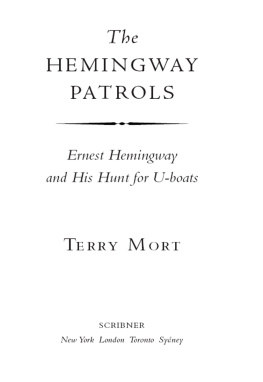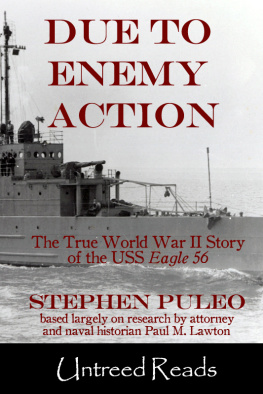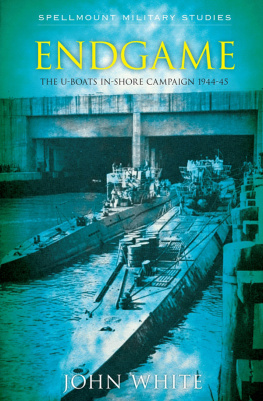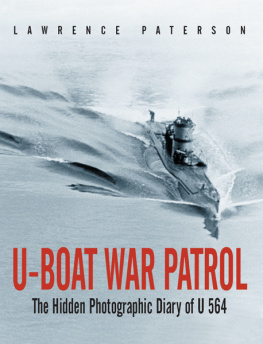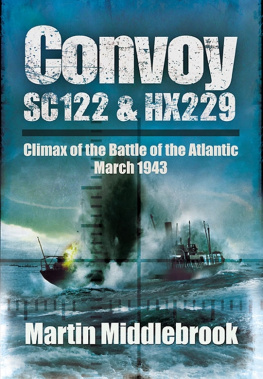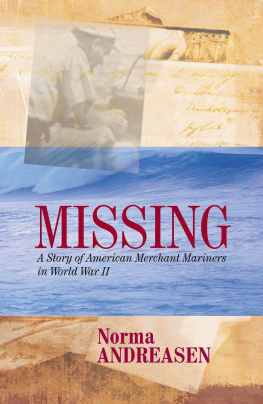OPERATION
DRUMBEAT
The Dramatic True Story of
Germanys first U-Boat
Attacks Along
the American Coast
in World War II
MICHAEL GANNON

To Gigi

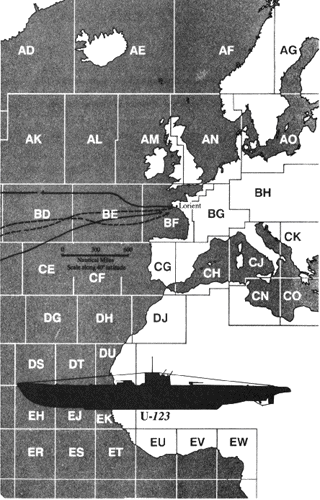
CONTENTS
It was night when the message from B-Dienst, the radio intelligence service of the German Navy, reached Adolf Hitlers underground bunker at the Wolfsschanze (Wolfs Lair) field headquarters near Rastenburg, deep in the Grlitz forest of East Prussia. When he read it the Fhrer was stunned: JAPAN BEGAN HOSTILITIES AGAINST THE UNITED STATES ON 7 DECEMBER. AT 1930 HOURS CENTRAL EUROPEAN TIME STRONG AIR FORMATIONS ATTACKED PEARL HARBOR (HONOLULU) .
The same message but with additional details of U.S. warship and aircraft losses flashed on the Siemens Geheimschreiber T-52 teleprinter in a handsome chateau requisitioned from a French sardine merchant at Kernvel, a point of land bordering the mouth of the inner harbor of the German-occupied Atlantic port of Lorient. There it was read with equal amazement by Admiral Karl Dnitz, Befehlshaber der Unterseeboote (BdU) (commander in chief, U-boats). Dnitz went directly to his Situation Room and moved his dividers across the three-foot-diameter world globe that he used for rapid-distance calculations.
It was the East Coast of the United States, however, that interested Dnitz most. A strike there would have much the same effect as the Japanese had had at Hawaii, revealing American vulnerability to a determined military foe. It would intimidate U.S. defenses and humiliate the civilian population. Most important, if followed by additional and unremitting strikes during the period when U.S. naval and air forces could still be expected to be weak and inexperienced, the operation could result in damage to the U.S. and Allied war effort far exceeding the damage wreaked at Pearl Harbor. Lost in the anchorage at Hawaii, it appeared from the news flash, were aged, slow warships, obsolescent by the standards of the new capital ships of the German Fleet; lost on the United States Atlantic doorstep, which contained the busiest sea-lanes in the world, would be a significant part of the merchant lifeblood that was keeping England in the war, not to mention fueling the United States own nascent war industries. The prospects of going after single, unescorted vessels in American waters were all the more exciting to the admiral since, in his view, it was in the Atlantic battle against commerce that the war with England would be won or lost, and at the present moment, on orders from the Fhrer, all War with the United States would get the U-boats back in the Atlantic where they belonged. The commander in chief knew that all his commanders would be of one mind with him: The Americans must be made to pay for their false neutrality; for their arrogance in declaring four-fifths of the Atlantic to be part of the Western Hemisphere; for their sighting reports on U-boats to British destroyers; and for their hitherto-untouchable convoys of war materiel and food to enemy England.
Since October, Dnitz had sent boats to intercept Britain-bound convoys as far west as the banks of Newfoundland, but now, with mounting expectancy, he jumped his gaze southward, past the St. Lawrence River and the Nova Scotia coast, to the seaports of New England; then along the south shore of Long Island to New York Harbor, where in 1941 one could count fifty arrivals and departures every twenty-four hours; from there down the shipping lanes that fed into Delaware and Chesapeake bays; past the dangerous currents off Cape Hatteras; and, finally, through the heavily trafficked Straits of Florida that funneled shipping to and from the Gulf of Mexico and the Windward Passage. Now it was the U.S. coastal waters themselves that must be attackedfrom New York to Cape Hatteras to Florida. If Dnitz could persuade Oberkommando der Kriegsmarine (OKM), Naval High Command at Berlin, to release Type IX boats from west of Gibraltar, U-Boat Command (BdU) might be able to put together enough boats for a combined surprise attack. When the Fhrer declared war on the United States, as he soon must, Dnitz would be poised to strike a blow against the United States as sudden and as jarring as a beat on a kettledrum. And that, he decided, was what he would call it: Operation Paukenschlag (Operation Drumbeat).
This book began as a single footnote to a history of larger scope in which I have been engaged for a number of years. It has long been known in a general way that German U-boats operated against merchant shipping along the United States East Coast during the first period of formal U.S.-German warfare in January-July 1942. But was it possible, I wondered, to identify the individual U-boat that sank the oil tanker Gulfamerica in a blazing display off Jacksonville Beach, Florida, on the night of 10 April 1942and identify as well the U-boats commander? The more the footnote fascinated, the more detective work it provoked, with the result that the footnote grew into a paragraph, a chapter, a book. It became a book because the research disclosed that there was a much larger story attached to that particular U-boat, which bore the designation V-123, and to its commander, twenty-eight-year-old Kapitnleutnant (lieutenant commander) Rein-hard Hardegen, than the single sinking of Gulfamerica. It was a story that took me far from Florida waters to the approaches to New York Harbor, where on 14 January 1942, the same Reinhard Hardegen inaugurated a series of U-boat attacks on the United States so severe and extensive, and so appallingly undefended, that, taken together, they constituted an Atlantic Pearl Harbor. In Hardegens case the targets were not warships but freighters and tankers and their cargoesthe sinews of war.
It can, and will be, argued in this book that the U-boat assault on merchant shipping in United States home waters and the Caribbean during 1942 constituted a greater strategic setback for the Allied war effort than did the defeat at Pearl Harborparticularly in that the loss of naval vessels destroyed or damaged at Hawaii had little or no bearing on the decisive carrier battles that developed soon after with the Japanese at Coral Sea and Midway; whereas the loss of nearly 400 hulls and cargoes strewn across the sands of the U.S. Navys Eastern, Gulf, and Caribbean Sea frontiers threatened both to sever Great Britains lifeline and to cripple American war industries. As Army Chief of Staff General George C. Marshall agonized on 19 June 1942: The losses by submarines off our Atlantic seaboard and in the Caribbean now threaten our entire war effort. If the leaching of lives and materiel had continued unchecked, one can speculate what would have been the effects on any future Allied invasion of German-occupied Europe and on Germanys ability to concentrate all her forces in the war against Russia.
German naval historian Michael Salewski has suggested that in order to understand the complex sixty-nine-month-long Battle of the Atlantic, the battle on which, more than any other, turned the outcome of World War II, one might profitably study a single heavily engaged U-boat, which mirrored at once both the greater strategy of war and its everyday horror.daring, even reckless commanders in the Ubootwaffe, the submarine fleet. It is the story as well of U-boat warfare in general, of daily life and routine aboard the Type IXB boat that Hardegen commanded, of the woefully deficient U.S. defenses against U-boats in the opening months of U.S.-German hostilities, of U-723s bold, determined destruction of enemy vessels, yet also of a commanders sometimes humanitarian concern for the enemy crews he set adrift. It is also a story of fearthe panicky fear of merchant seamen scrambling for lifeboats and the claustrophobic fear of a U-boat crew trapped under the dread pounding of depth charges. It is a story told also through the eyes of the U.S. Navy Command, so far as that story can be pieced together from the extant record (most of the principals being deceased). On the German side it is a story of lost opportunities for the Kriegsmarine (German Navy), which might well have defeated England (and thus denied the United States that island base from which to mount a joint American-British invasion of German-occupied Europe) if Adolf Hitler had permitted the timely diversion of resources from tanks for land war to U-boats for the decisive Battle of the Atlantic. On the American side it is a story of naval unpreparedness and inexperience, of negligence and dereliction of duty, of command inflexibility and unseemly arroganceand yet of final triumph.





